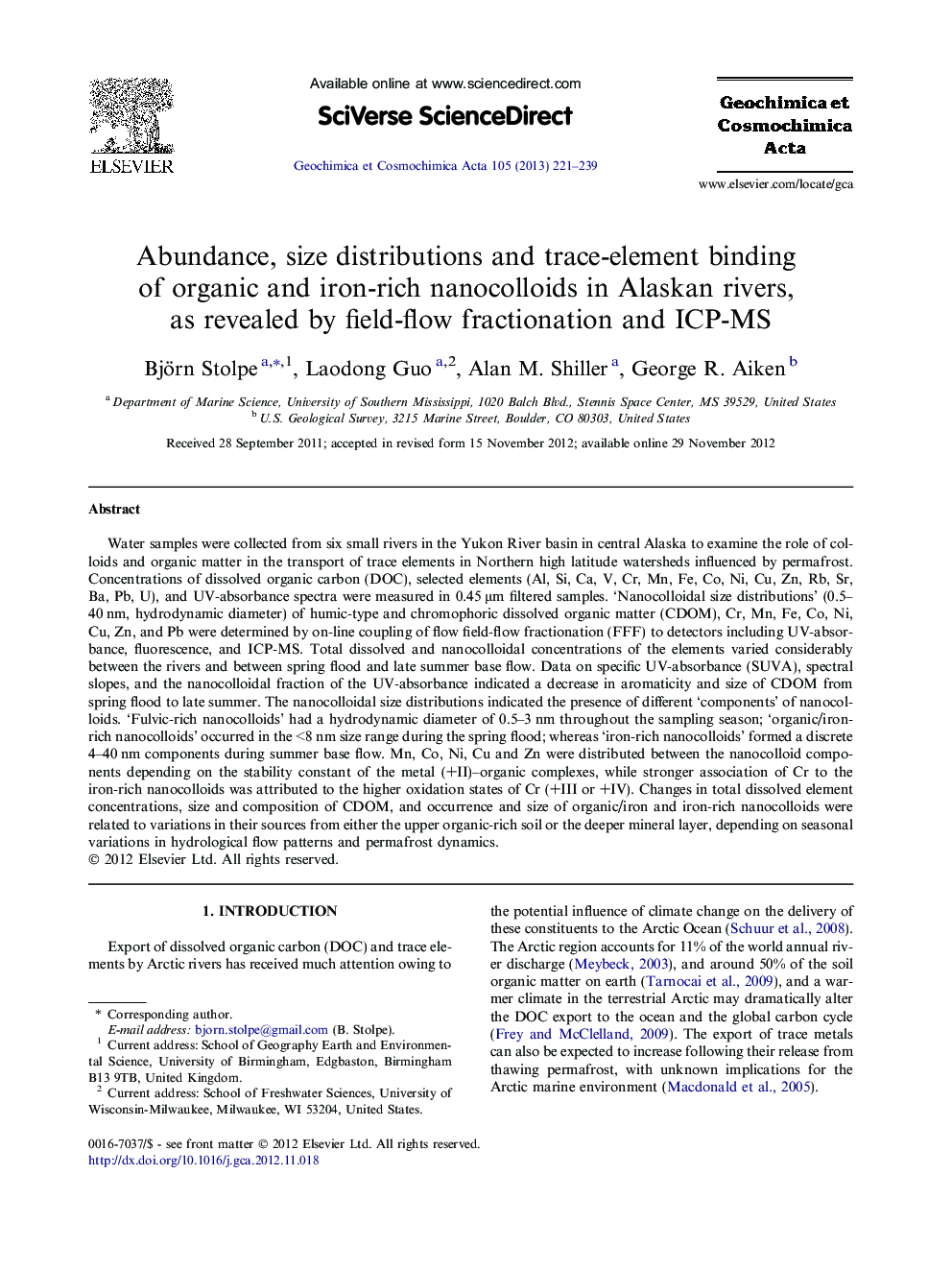| کد مقاله | کد نشریه | سال انتشار | مقاله انگلیسی | نسخه تمام متن |
|---|---|---|---|---|
| 4702551 | 1638052 | 2013 | 19 صفحه PDF | دانلود رایگان |

Water samples were collected from six small rivers in the Yukon River basin in central Alaska to examine the role of colloids and organic matter in the transport of trace elements in Northern high latitude watersheds influenced by permafrost. Concentrations of dissolved organic carbon (DOC), selected elements (Al, Si, Ca, V, Cr, Mn, Fe, Co, Ni, Cu, Zn, Rb, Sr, Ba, Pb, U), and UV-absorbance spectra were measured in 0.45 μm filtered samples. ‘Nanocolloidal size distributions’ (0.5–40 nm, hydrodynamic diameter) of humic-type and chromophoric dissolved organic matter (CDOM), Cr, Mn, Fe, Co, Ni, Cu, Zn, and Pb were determined by on-line coupling of flow field-flow fractionation (FFF) to detectors including UV-absorbance, fluorescence, and ICP-MS. Total dissolved and nanocolloidal concentrations of the elements varied considerably between the rivers and between spring flood and late summer base flow. Data on specific UV-absorbance (SUVA), spectral slopes, and the nanocolloidal fraction of the UV-absorbance indicated a decrease in aromaticity and size of CDOM from spring flood to late summer. The nanocolloidal size distributions indicated the presence of different ‘components’ of nanocolloids. ‘Fulvic-rich nanocolloids’ had a hydrodynamic diameter of 0.5–3 nm throughout the sampling season; ‘organic/iron-rich nanocolloids’ occurred in the <8 nm size range during the spring flood; whereas ‘iron-rich nanocolloids’ formed a discrete 4–40 nm components during summer base flow. Mn, Co, Ni, Cu and Zn were distributed between the nanocolloid components depending on the stability constant of the metal (+II)–organic complexes, while stronger association of Cr to the iron-rich nanocolloids was attributed to the higher oxidation states of Cr (+III or +IV). Changes in total dissolved element concentrations, size and composition of CDOM, and occurrence and size of organic/iron and iron-rich nanocolloids were related to variations in their sources from either the upper organic-rich soil or the deeper mineral layer, depending on seasonal variations in hydrological flow patterns and permafrost dynamics.
Journal: Geochimica et Cosmochimica Acta - Volume 105, 15 March 2013, Pages 221–239